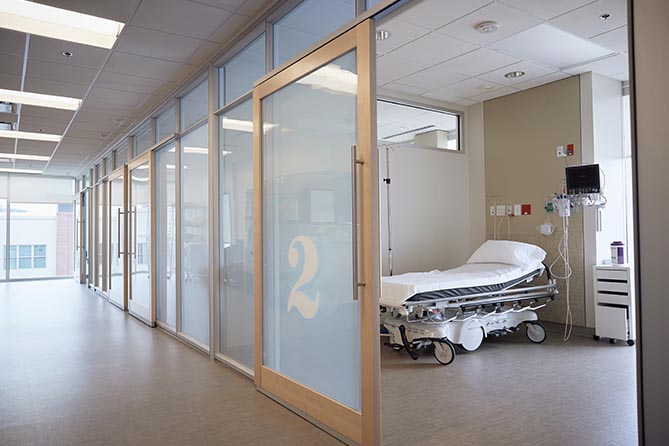October 14, 2024
Denise Gaulin
Principal, Healthcare Consulting Leader
Atlanta, GA

Related Industries
< Back to Resource Center
Future is Bleak Without Innovation
Hospitals Faced Many Challenges in 2022
The American Hospital Association (AHA) released its Fall 2022 Update for hospitals earlier in September 2022, citing numerous challenges that have impacted the financial performance and sustainability of hospitals this year. Since the COVID-19 pandemic in 2022, U.S. hospitals and health systems continue to grapple with financial distress, facing billions of dollars in losses. The AHA report cites the following key issues:
- Financial margins for hospitals and health systems remain depressed, with optimistic projections suggesting that margins would be down 37 percent.
- More hospitals will finish 2022 with negative margins, approximately 53 percent.
- Labor expenses and non-labor expenses have increased by billions of dollars in 2022.
- Hospitals and health systems continue to face other challenges related to workforce shortages and disruptions to the supply chain.
More than 600 rural hospitals are also at high risk of closing in the near or immediate future, according to a recent report from the Center for Healthcare Quality and Payment Reform. This number accounts for approximately 30 percent of all rural hospitals in the U.S. The report cites this risk based on persistent financial losses on patient services and low financial reserves.
What This Means for 2023
While the demand for healthcare remains high, labor continues to be a top issue for hospitals and health systems in 2023, with a record increase in physician and nursing burnout leading to higher labor expenses and shortage of staff. Fitch Ratings released a report on Dec. 1 for not-for-profit hospitals and health systems that confirmed labor as the largest single expense for healthcare providers, including salary, wages and benefits, typically accounting for 50 percent or more of overall expenses. High turnover at the C-suite and manager levels have also contributed to labor challenges and the ability to complete larger projects. While hospitals are using technology to ease the burden, the impact to financial performance is still dire. Additionally, an increase in payer contracts is not expected to be enough to cover costs incurred as a result of inflation.
Overall, hospitals and health systems are expected to invest less in capital spending. Some government support is expected to continue for hospitals, but COVID-19 relief funds will likely discontinue. Health systems are also looking to invest in technology companies for revenue diversification, with an increased focus on revenue cycle improvements and merger and acquisition (M&A) strategy. According to Fitch Ratings, 2023 is not expected to show a rapid operational recover for many hospitals and health systems. Many are expected to break-even on a month-to-month basis sometime in 2023.
How Hospitals Can Face 2023 With Optimism
In January, we built the case that 2022 would be the year of automation for hospitals and healthcare systems, providing a more sustainable alternative to combat eroding margins, particularly in the revenue cycle. Now as 2022 comes to a close, and especially as hospitals prepare to weather 2023, automation and innovation in healthcare is critical now more than ever to help these organizations remain open, serve their patients and improve their financial performance. Essentially, change management and agility will likely prove to be a significant factor in the individual performance outlook of individual hospitals and health systems, focusing on changes that are transformational rather than incremental.
Health information technology (IT) departments and systems should continue to seek ways that upskill their ability with new technologies in automation (healthcare IT managed service providers are expected to see more growth in 2023). The revenue cycle for hospitals and health systems is a prime opportunity to apply innovation and automation to transform revenue cycle management and discover new sources of revenue. Automation in revenue cycle management can drastically improve the process for tracking and collecting revenue and maintain quality care for patients. This can lead to increased financial efficiency and resiliency, ultimately fortifying operations, mitigating staff disruptions and protecting the bottom line.
Additionally, hospitals and health systems must evaluate how they can provide the flexibility desired by today’s physicians, nurses and other staff to combat the labor shortage and remain competitive to recruit and retain top healthcare talent. Practical options include allowing employees to work remotely when feasible, tailoring more jobs for remote work and avoiding back-to-back night and weekend shifts whenever possible.
Windham Brannon Healthcare Consultants Can Help
As hospitals face the need for transformational change, help from the right advisor can help organizations develop a clear road map and strategy with those who know the industry. Windham Brannon’s experienced team of healthcare consultants can help you assess and combat the challenges facing he industry, while improving your outlook for 2023 and beyond. For more information, reach out to your Windham Brannon advisor or Denise Gaulin.


